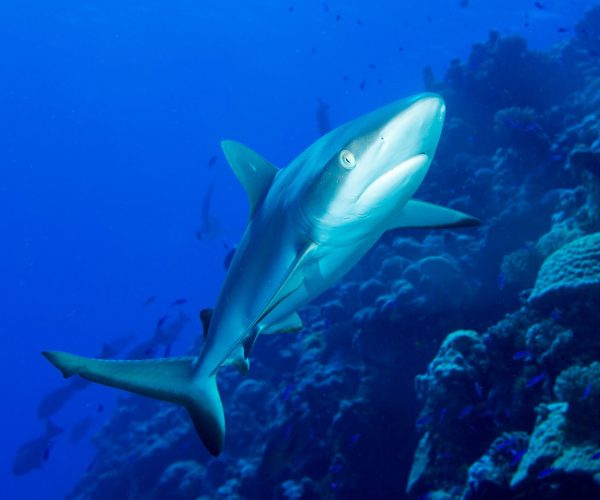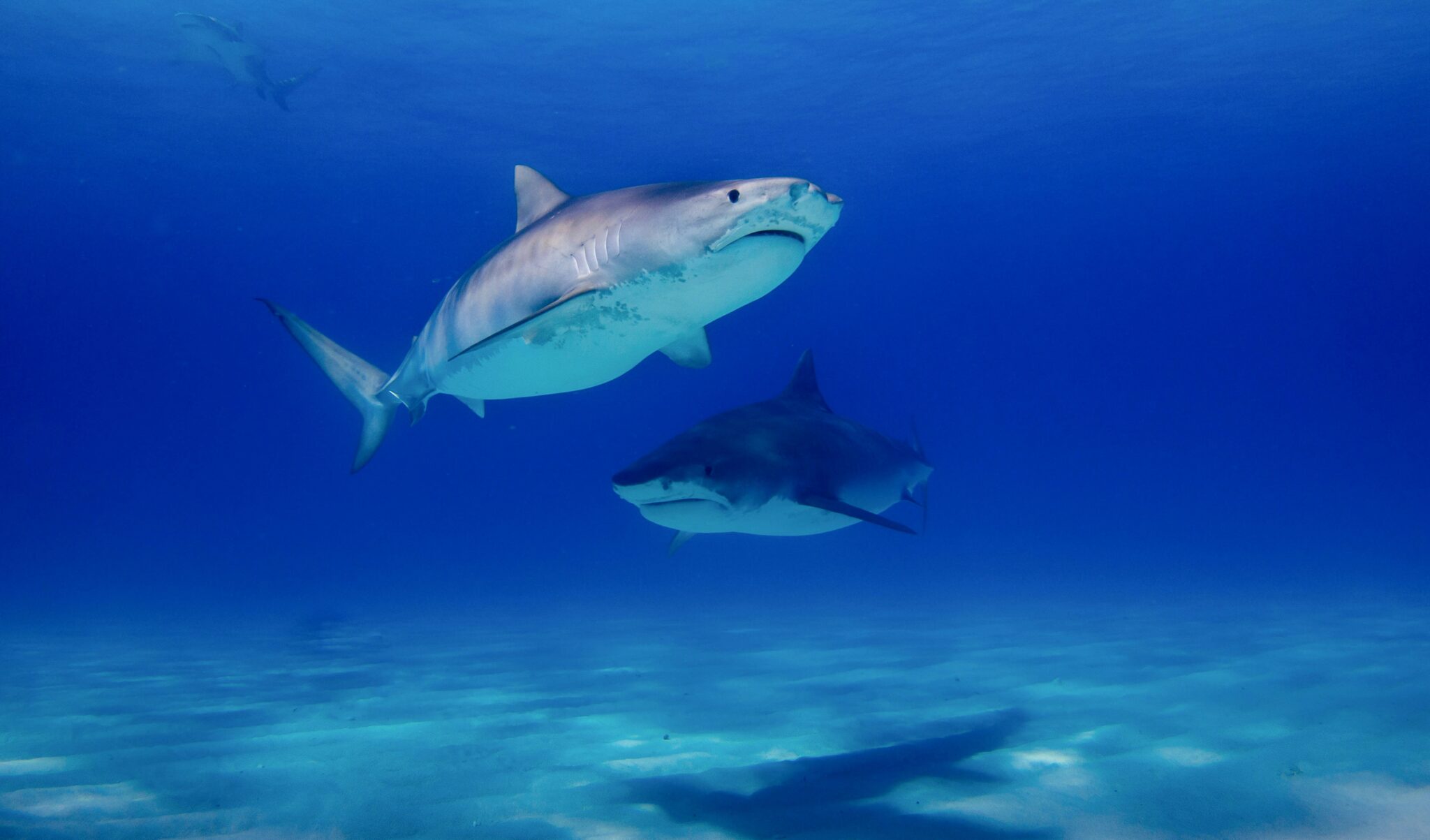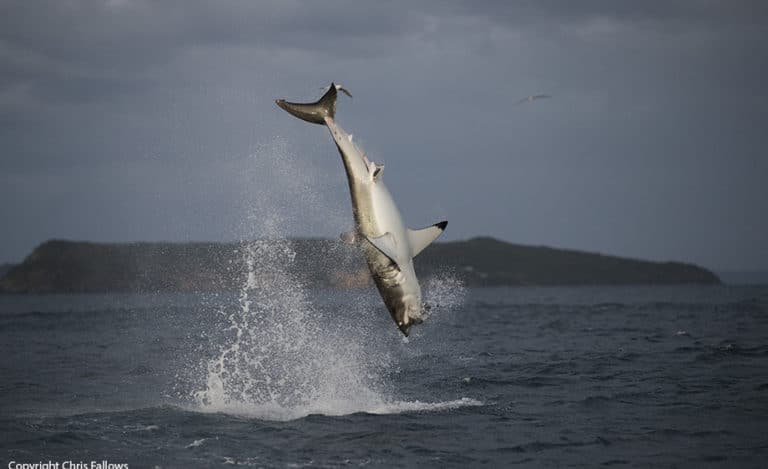How Do You Tell a Female Shark from a Male?
When people picture sharks, they often imagine a single “type” of animal — streamlined, powerful, and mysterious. But just like birds or mammals, sharks have noticeable differences between males and females. If you’ve been on a shark dive in Cape Town’s False Bay or Gansbaai, you may have already seen these differences without realizing what you were looking at. Distinguishing male from female sharks is not only fascinating — it also plays a key role in shark conservation, population monitoring, and ecotourism education.
Below is an easy-to-understand, scientifically accurate guide, grounded in peer-reviewed marine biology research and years of field observation used in shark research programs in South Africa. We also have more shark facts available to look at.


The Most Reliable Feature: Claspers
The defining difference between male and female sharks lies in their pelvic fins:
- Male sharks have claspers — two rod-like, often slightly curved appendages located on the underside near the tail.
- Female sharks do not have claspers.
Think of claspers as the shark equivalent of reproductive organs used during mating. Males use them to transfer sperm to the female. If you’re viewing a shark from below — such as on a cage dive or while snorkeling — this is a clear, quick identification cue.
Example in Cape Town:
Bronze whalers (common in False Bay) show very visible claspers on males, especially juveniles. This makes them excellent teaching examples for new divers.
Size Differences: Females Are Often Larger
In many shark species, females grow bigger than males. This is tied to reproduction: larger females can carry more pups and have more internal space (most sharks give birth to live young).
Peer-reviewed studies across shark families show this pattern consistently, from great whites (Carcharodon carcharias) to ragged-tooth sharks (Carcharias taurus).
- Female great whites can exceed 5–6 meters.
- Males often max out closer to 3.5–4 meters.
This is why in Cape Town, the largest great whites historically seen around Seal Island have nearly always been females.
Relatable comparison:
It’s like how female elephants are typically larger in social herds because size improves survival and reproductive success.
Look for Scars — Especially on Females
Shark courtship is rough. Males do not have hands, so they grasp the female by biting during mating. As a result:
- Females often have visible scarring, especially around the pectoral fins and gill area.
Marine biologists use these patterns to track reproductive activity in populations. Long-term monitoring studies in False Bay have documented increases in scarring on female sevengill sharks during breeding seasons — helping estimate when mating occurs locally.
Behavior Can Offer Clues
In some species, males and females frequent different parts of the coastline or interact differently with boats, divers, and prey.
- In Cape Town, female broadnose sevengill sharks are more commonly seen around Seal Island.
- Males tend to be more transient and roam wider territories.
Similarly, satellite tagging research on great whites in South Africa shows sex-specific migration routes, with females undertaking long oceanic journeys linked to pupping cycles.


Why This Matters for Conservation
Knowing whether sharks are male or female helps:
- Track breeding patterns
- Assess population stability
- Identify nursery areas
- Guide marine protected area planning
For example, identifying female aggregation sites ensures protection of regions vital for pupping and juvenile survival — a key factor for long-lived species that reproduce slowly.
Next Time You See a Shark…
Whether you’re cage diving in Cape Town, snorkeling among the great African seaforest, or spotting fins from Muizenberg’s surf lookout towers, try this checklist:
| 🦈 Feature | ♂️ Male | ♀️ Female |
|---|---|---|
| 🦵 Claspers | ✅ Yes | ❌ No |
| 📏 Typical Size | Smaller | Larger |
| ⚔️ Scarring | Often fewer | Often more from mating |
| 🧭 Movement Patterns | More roaming | More site fidelity in breeding areas |
Final Thought
Sharks are not just ocean predators — they are complex, long-lived animals with social, reproductive, and ecological behaviors shaped by millions of years of evolution.
Learning to recognize male and female sharks deepens our respect for their lives and strengthens conservation efforts in Cape Town and worldwide.




